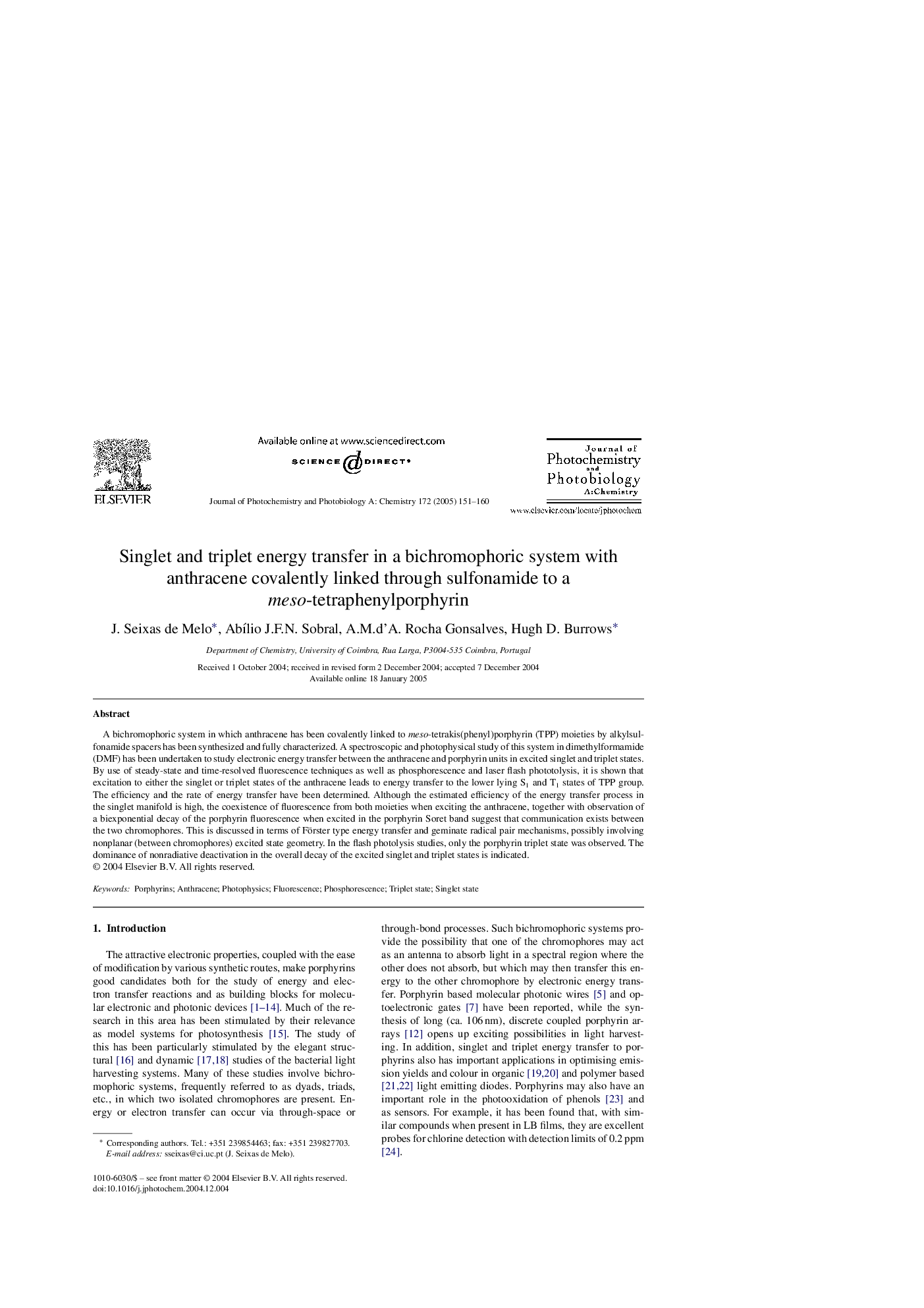| Article ID | Journal | Published Year | Pages | File Type |
|---|---|---|---|---|
| 9605628 | Journal of Photochemistry and Photobiology A: Chemistry | 2005 | 10 Pages |
Abstract
A bichromophoric system in which anthracene has been covalently linked to meso-tetrakis(phenyl)porphyrin (TPP) moieties by alkylsulfonamide spacers has been synthesized and fully characterized. A spectroscopic and photophysical study of this system in dimethylformamide (DMF) has been undertaken to study electronic energy transfer between the anthracene and porphyrin units in excited singlet and triplet states. By use of steady-state and time-resolved fluorescence techniques as well as phosphorescence and laser flash phototolysis, it is shown that excitation to either the singlet or triplet states of the anthracene leads to energy transfer to the lower lying S1 and T1 states of TPP group. The efficiency and the rate of energy transfer have been determined. Although the estimated efficiency of the energy transfer process in the singlet manifold is high, the coexistence of fluorescence from both moieties when exciting the anthracene, together with observation of a biexponential decay of the porphyrin fluorescence when excited in the porphyrin Soret band suggest that communication exists between the two chromophores. This is discussed in terms of Förster type energy transfer and geminate radical pair mechanisms, possibly involving nonplanar (between chromophores) excited state geometry. In the flash photolysis studies, only the porphyrin triplet state was observed. The dominance of nonradiative deactivation in the overall decay of the excited singlet and triplet states is indicated.
Related Topics
Physical Sciences and Engineering
Chemical Engineering
Bioengineering
Authors
J. Seixas de Melo, AbÃlio J.F.N. Sobral, A.M.d'A. Rocha Gonsalves, Hugh D. Burrows,
